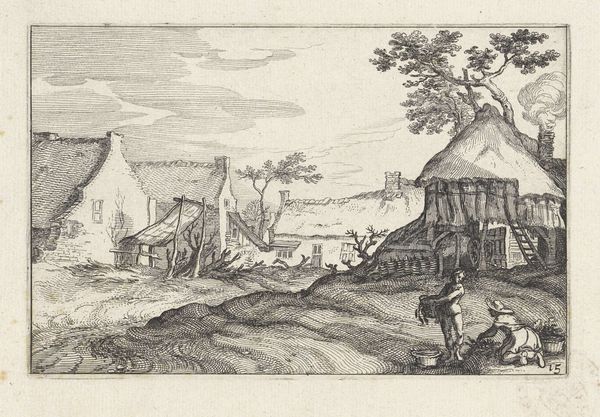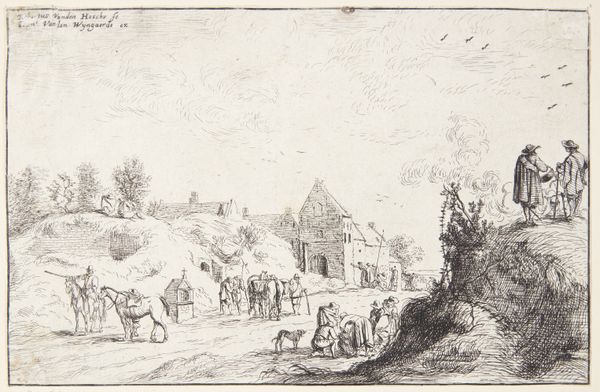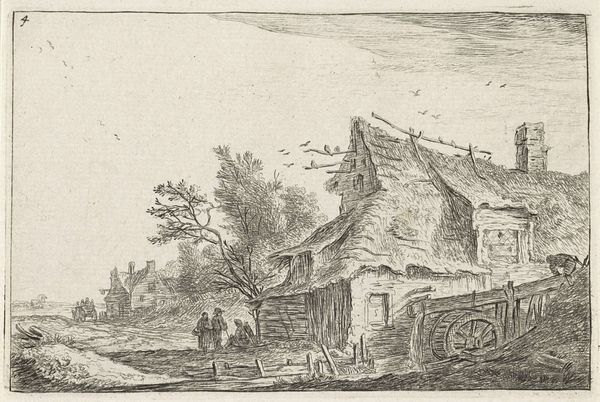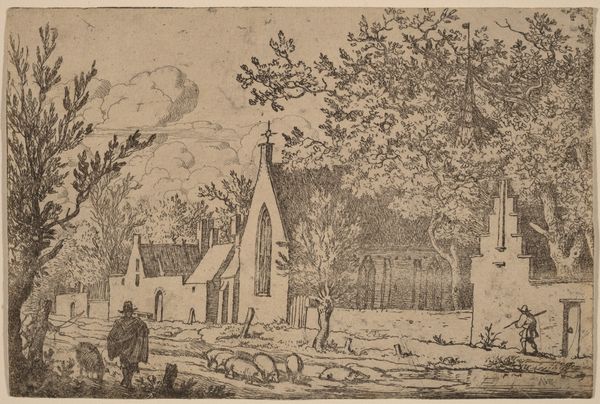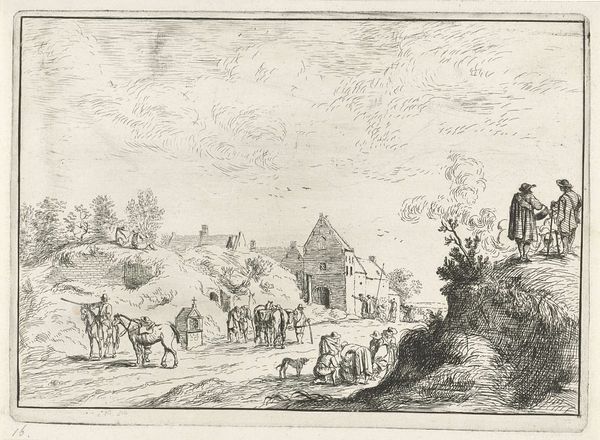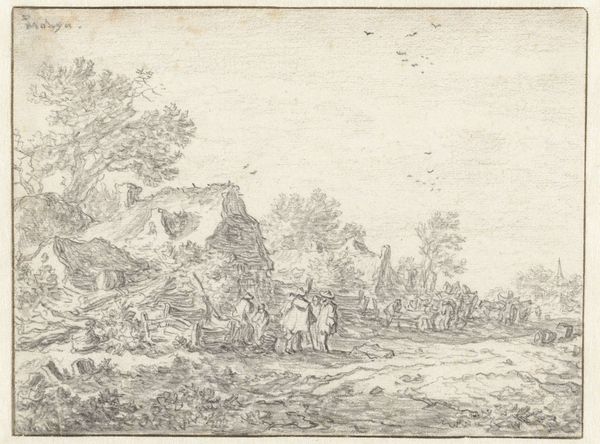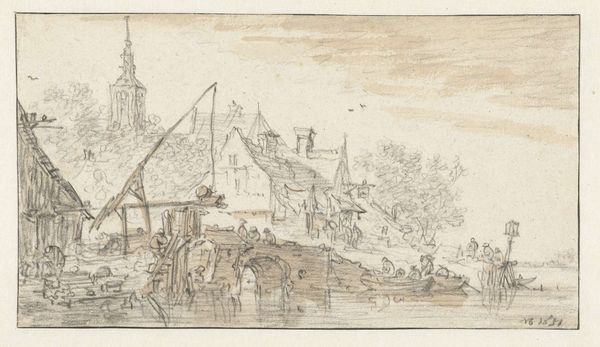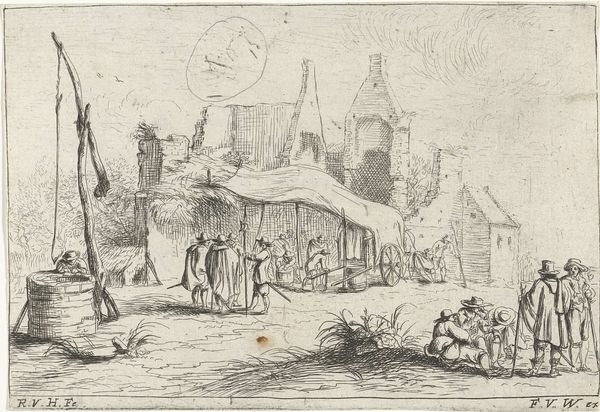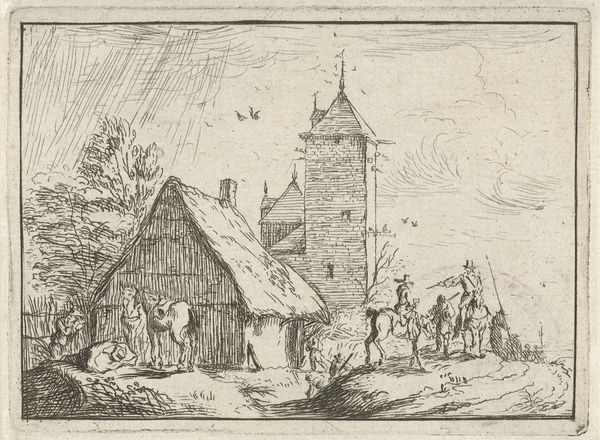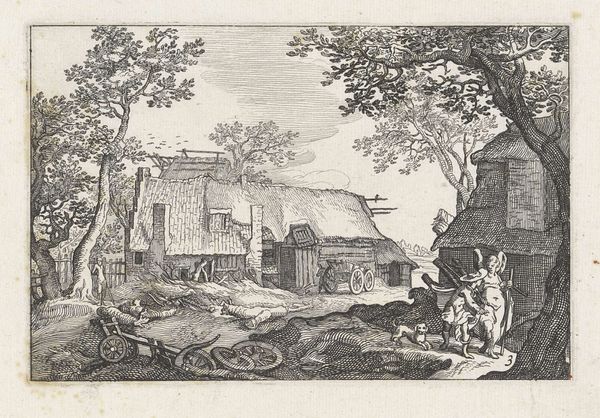
drawing, etching, pen
#
drawing
#
baroque
#
pen sketch
#
etching
#
landscape
#
figuration
#
line
#
pen
#
genre-painting
#
realism
Dimensions: height 230 mm, width 158 mm
Copyright: Rijks Museum: Open Domain
Curator: Jan Lauwryn Krafft’s “Boerenhuis aan het water”, or “Farmhouse by the Water,” etched sometime between 1704 and 1765, offers a glimpse into the everyday life of the Dutch countryside. Editor: It feels like a stage set, doesn’t it? Very deliberate. The eye is drawn to the trio of figures, but the overall effect is a slightly unsettling blend of rural charm and artifice. I keep wondering what story they're enacting. Curator: That's a keen observation. These genre scenes were very popular; the depiction of daily life amongst the agrarian classes certainly spoke to the sensibilities of urban collectors. This work blends elements of realism and a touch of idealized nostalgia. The artist presents what might appear like a candid, unaffected representation, while in reality, he carefully selects elements of country life for the purpose of entertainment. Editor: Look how precisely those lines define the textures of the thatched roof of the farmhouse, yet the faces of the figures seem so indistinct. It makes me question their purpose, are they inhabitants or players? There’s a stark contrast between the detailed structure and the anonymous people. Even that slender dog seems to gaze in their direction. Curator: The attention to detail in depicting the architecture, balanced against the comparatively generalized representation of the figures, could symbolize a fascination with order, prosperity, and permanence during that era. This kind of work satisfies both curiosity for detail and escapism. Also, this print would have circulated widely and reached larger audiences than painting. Editor: Interesting! It is such an immersive scene, even now. The muted palette evokes a feeling of subdued elegance and peace. You know, despite the potential for idealized sentiment, there's also a grounding presence here. Those figures—generic or not—suggest resilience and enduring spirit tied to the land. Curator: Perhaps Krafft has captured not just the picturesque aspects, but also a shared feeling toward the changing roles and attitudes surrounding agrarian populations during that era. A visual treaty perhaps. Editor: Absolutely! Thinking about the era in that manner enriches our view of art's multifaceted roles beyond aesthetics. Thank you.
Comments
No comments
Be the first to comment and join the conversation on the ultimate creative platform.
